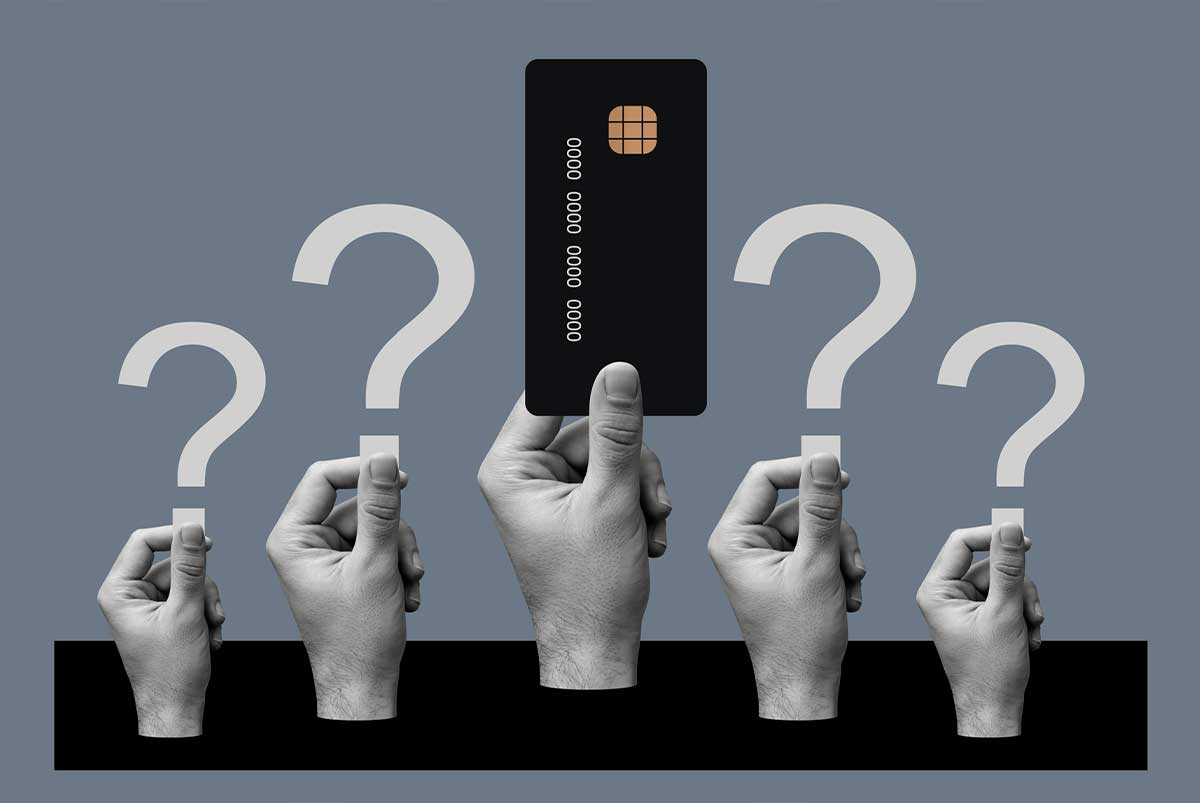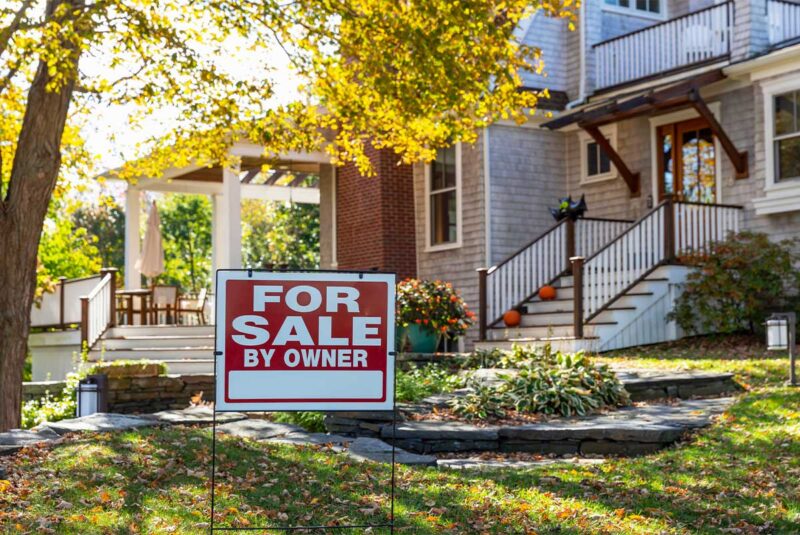Ready To Buy a Home?
Get Approved to Buy a Home
Rocket Mortgage® lets you get to house hunting sooner.
So you’re thinking about buying a house. But… you don’t have credit. We’re talking no credit history at all. Can you buy a house without it? In a word: yes!
It’ll take more legwork, and the process will probably take longer, but it can be done – and we’ll explain how.
What Does It Mean To Have No Credit History?
Having no credit history is like having a notebook with blank pages. The pages are empty because you haven’t had any credit activity in your name, like a car loan, student loan or credit card account.
The Consumer Financial Protection Bureau (CFPB) refers to people without a credit history as “credit invisible.” According to the CFPB, around 26 million American adults are credit invisible. The people who are most likely to have no credit history tend to be:[1]
- Younger: Over 80% of 18- and 19-year-olds are either credit invisible or unscored, compared to under 40% of people in their early 20s.
- Older: Credit invisibility increases after the age of 60.
- Members of underserved communities: In lower-income neighborhoods across the United States, more than 40% of adults are credit invisible or unscored.
No credit history vs. bad credit
It’s important to understand that no credit and bad credit are two very different things. Having no credit is an unknown. Bad credit is a track record that lenders will hold against you.
The reason lenders do this is because if you have a bad credit score, it likely signals missed or late payments in your past. Or it could mean you have a lot of debt. In the lender’s eyes, this makes you a riskier bet when it comes to paying back the mortgage loan.
Sometimes, it can be easier to be approved for a mortgage with no credit than with bad credit.
How To Buy a House With No Credit
Here are the most common ways to boost your chances of getting a mortgage with no credit.
Make a high down payment
Having a healthy pile of cash to put down on your home can help secure that mortgage. And the more you put down, the less you’ll need to borrow. This will shrink your monthly mortgage payment and potentially help you qualify for a lower mortgage rate.
Bottom line: a mortgage lender will look favorably on a big down payment. Not only does it signal that you’re financially responsible enough to save up for the down payment, but in their eyes, it makes you less risky to lend money to.
Provide nontraditional credit documentation
Not having a credit history or credit score makes it harder for mortgage lenders to evaluate you as a potential borrower – but it’s not impossible. Credit history or not, lenders need to gauge and verify your ability to repay a loan.
To do this, lenders can use nontraditional credit data in place of traditional credit data. Here are some examples:
- Rent payments or verification of rent (VOR)
- Car, health or renters insurance payments
- Medical bill payments
- College tuition payments
- Water, electric, gas or other utility payments
- Cellphone payments
Lenders want to see if you consistently make your payments on time and in full.
Get a co-signer
Another way to get around no credit history is to partner with a co-signer who has a good credit history. But before anyone signs anything, make sure your co-signer knows they’ll be legally obligated to pay back the loan if you can’t.
Rather than risk future invites to friend or family dinners, make sure you and your co-signer are well aware of the risks and responsibilities of co-signing. If you miss a payment, they’ll be on the hook to pay it, and it can affect their credit.
Need Mortgage Help?
New home, second home, refinancing, we’ve seen it all. Whatever your goals, expert help is just a click away.
Mortgage Options for Home Buyers With No Credit
Now that we’ve gone over the best tactics for purchasing a home with no credit, here are the specific mortgage types you might go after.
Conventional mortgage
Conventional loans aren’t directly backed by the federal government. While they traditionally have more stringent requirements than some government-backed loans, you can still qualify with no credit history.
Here’s what you’ll need to qualify without credit:[2]
- Debt-to-income (DTI) ratio below 36%.
- Documentation of nontraditional credit history
- 12 months reserve of mortgage payments, or one of your nontraditional credit references must be a rental payment history
Federal Housing Administration (FHA) loans
Borrowers with credit scores below 620 have FHA loans as an option. The requirements for an FHA loan are more relaxed than the requirements for most conventional mortgages. And they’re also available to home buyers with no credit history.
To apply, you’ll need to provide three nontraditional credit sources, including at least one that outlines your rental or utility payments.[3]
You’ll also need:[4]
- At least a 3.5% down payment
- A DTI ratio that’s lower than 31% (in most circumstances) or 43% when other criteria are met
- 2 years of steady employment income
Department of Veterans Affairs (VA) loans
Are you an active or retired member of the U.S. armed forces or a surviving spouse? If so, loans might be available to you through the VA loan program.
You can get a mortgage with no down payment or mortgage insurance requirement. The interest rates for VA loans tend to be slightly lower, as well. You’ll have to pay a one-time funding fee that will total around 1.4% – 3.6% of your loan amount.[5]
Borrowers must apply for a certificate of eligibility (COE) through the VA. This certificate confirms that you’re eligible for a VA loan.
There aren’t many other VA requirements for these loans, but your lender may have its own minimum credit requirements.
U.S. Department of Agriculture (USDA) loans
If you live in a rural area or want to move to the countryside, you may be able to qualify for a USDA loan. To get one without a credit history, you’ll need:
- A year’s worth of payment history from three alternative credit sources – like rent payments, utility payments or insurance – two sources will be sufficient if one is verification of rent or mortgage payments.[6]
- Income below 115% of the home area’s median income[7]
- DTI ratio of 41% or lower[7]
Home Possible® and HomeReady® mortgages
Fannie Mae and Freddie Mac offer special mortgages to low-income and first-time home buyers.
Fannie Mae’s HomeReady® mortgage is targeted at lower-income home buyers with good credit. If the buyer has no credit, they can still get a HomeReady® loan if they can provide at least three nontraditional credit sources. One of these credit sources must be housing-related. If no housing-related credit source is available, you’ll have to save up to 12 months’ worth of mortgage payments to qualify for the loan.[8]
You’ll also need:[9]
- Income under 80% of your region’s median income
- A maximum DTI ratio of 45%
- A loan-to-value (LTV) ratio no higher than 90% – some lenders may allow up to 97%
Freddie Mac’s Home Possible® home loan is very similar to the HomeReady® home loan. And borrowers without a credit history are eligible for this mortgage, too. Borrowers are required to have:
- At least two nontraditional credit sources – one must be housing-related[10]
- Income under 80% of your region’s median income[11]
- A maximum DTI ratio of 45%[12]
- An LTV no higher than 95%[13]
Homeownership course
Both Fannie Mae and Freddie Mac require that borrowers with no credit history attend a homeownership course before closing on their HomeReady® or Home Possible® mortgages.
Fannie Mae offers the Framework home buyer course. Freddie Mac offers Homebuyer U through its CreditSmart® suite of financial and homeownership courses. After you’ve completed the homeownership course, you’ll get a certificate of completion saved to your mortgage file.
Tips for First-Time Home Buyers With No Credit
Regardless of which mortgage option you choose, we’ve put together some advice for first-time home buyers without a credit history.
1. Build your credit
There’s no right or wrong time to buy a house. Taking the extra time to build your credit history could pay dividends in the long run. You might qualify for a lower mortgage rate, which could save you thousands of dollars over the life of your loan.
2. Shop multiple lenders
Just because you’re a first-time home buyer without a strong credit history doesn’t mean you have to settle. It’s still worthwhile to talk to different lenders and get an idea of what their rates and lender fees will be.
3. Save for a bigger down payment
Sometimes, slowing down your timeline to buy a house can be the best move. In addition to focusing on building up your credit, you can also save more to put toward a down payment. It’s hard to overstate how much a decent down payment can help you. It lowers the total amount you’ll borrow, reduces your monthly mortgage payment and makes you more likely to be approved for the loan – credit history or not.
Don’t Let No Credit History Stop You From Buying a House
You’ll likely need expert guidance on which loan is right for you and how much debt you can handle. For that, look for a reputable lender who’ll keep your best interest in mind.
Community banks, your local credit union and online lenders tend to be good sources for no-credit mortgages.
Before you grab that mortgage application, do your homework and start collecting your nontraditional credit sources. Soon enough, you may find yourself lounging in your new home.
The Short Version
- You can buy a house with no credit history, but keep in mind that no credit is different from bad credit
- The best ways to buy a house without credit are to make a large down payment, find a co-signer or provide nontraditional credit documentation
- Rent, utility bills, cellphone payments and college tuition are all acceptable forms of nontraditional credit
Consumer Financial Protection Bureau. “Data Point: Credit Invisibles.” Retrieved May 2023 from https://files.consumerfinance.gov/f/201505_cfpb_data-point-credit-invisibles.pdf
Fannie Mae. “B3-5.4-01, Eligibility Requirements for Loans with Nontraditional Credit (02/01/2023).” Retrieved May 20223 from https://selling-guide.fanniemae.com/Selling-Guide/Origination-thru-Closing/Subpart-B3-Underwriting-Borrowers/Chapter-B3-5-Credit-Assessment/Section-B3-5-4-Nontraditional-Credit-History/1032996871/B3-5-4-01-Eligibility-Requirements-for-Loans-with-Nontraditional-Credit-02-01-2023.htm#Manual.20Underwriting.3A.20At.20Least.20One.20Borrower.20Has.20No.20Credit.20Score
U.S. Department of Housing and Urban Development. “Non-traditional Mortgage Credit Report (NTMCR) Requirements.” Retrieved May 2023 from https://www.hud.gov/sites/documents/4155-1_1_SECC.PDF
Federal Deposit Insurance Corporation. “203(b) Mortgage Insurance Program.” Retrieved May 2023 from https://www.fdic.gov/consumers/community/mortgagelending/guide/part-1-docs/203b-mortgage-insurance-program.pdf
U.S. Department of Veterans Affairs. “VA Home Loan Guaranty Buyer’s Guide.” Retrieved May 2023 from https://www.benefits.va.gov/HOMELOANS/documents/docs/VA_Buyers_Guide.pdf
U.S. Department of Agriculture. “Direct Loan Program’s Credit Requirements.” Retrieved May 2023 from https://www.rd.usda.gov/files/RD-SFH-CreditRequirements.pdf
USDA Rural Development. “Single Family Home Loan Guarantees.” Retrieved May 2023 from https://www.rd.usda.gov/sites/default/files/fact-sheet/508_RD_FS_RHS_SFHGLP.pdf
Fannie Mae. “HomeReady FAQs.” Retrieved May 2023 from https://singlefamily.fanniemae.com/media/8316/display
Fannie Mae. “Eligibility Matrix.” Retrieved May 2023 from https://singlefamily.fanniemae.com/media/20786/display
Freddie Mac. “Mortgages For Borrowers Without Credit Scores.” Retrieved May 2023 from https://sf.freddiemac.com/content/_assets/resources/pdf/requirements/mtges4borr_nocreditscores.pdf
Freddie Mac. “Home Possible®.” Retrieved May 2023 from https://sf.freddiemac.com/working-with-us/origination-underwriting/mortgage-products/home-possible
Federal Deposit Insurance Corporation. “Home Possible®.” Retrieved May 2023 from https://www.fdic.gov/resources/bankers/affordable-mortgage-lending-center/guide/part-1-docs/freddie-home-possible.pdf
Freddie Mac. “Home Possible® Fact Sheet – Origination and Underwriting Requirements.” Retrieved May 2023 from https://sf.freddiemac.com/content/_assets/resources/pdf/fact-sheet/home_possible_factsheet.pdf




